
Constellation of the Month: Cygnus, The Swan.
by Mark S Deprest
Printed in Reflections: July, 2001.
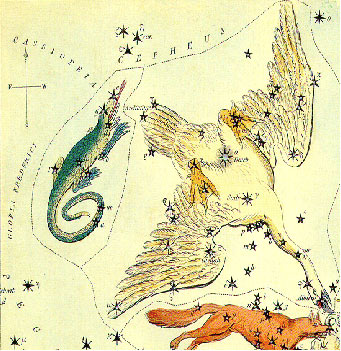
This
is without a doubt my favorite constellation, for a number of reasons,
but the most important one is probably; this constellation is the source
of my active participation in astronomy, that’s another story entirely.
This month’s story is about Love, Honor, Foolishness and Friendship. It’s
a story that explains the reason we see the Milky Way as a faint path across
the night sky.
Cycnus was a devoted friend of Phaethon, the mortal son
of Helios, the charioteer of the Sun. Phaethon was a bold and head strong
teenager, and like most teenagers, he thought he knew more than his “Old-Man.”
One night his bold nature got the better of him, and despite the advice
of his friend Cycnus, and the warnings of his father, Phaethon took out
the family car for a bit of a joy ride. The trouble was, the family car
was the Sun Chariot and its horsepower was provided by real horses, Phaethon
realized very quickly that his joy ride was a mistake, but it was too late.
The horses that pulled the Sun Chariot were strong and wild, and only the
strength of Helios could control them. Phaethon’s wild ride took
him dangerously
close to the vault of the heavens and threatened to singe the earth and
destroy the inhabitants of both. Cycnus pleaded with Jupiter to stop this
destruction, and with all of creation endangered, Jupiter sent a thunderbolt
toward the rampaging chariot and its occupant. With a terrible explosion
Phaethon was thrown from the chariot and the fiery steeds were stopped
long enough for Helios to gain control and guide them back to their stables.
Phaethon, being mortal could not survive the force of a thunderbolt and
fell to earth like a shooting star, his charred and lifeless remains landed
in the river Eridanus.
Cycnus could not leave his friend to the creatures
of the river to feed on, and wanted to give Phaethon a proper burial.
Cycnus
dove repeatedly into the river to gather the charred remains of his friend.
Jupiter, watching this selfless display of devotion was moved, and when
Cycnus had completed his task of love and honor. Jupiter decided to give
Cycnus a gift of immortality and changed his name to Cygnus and him into
a glorious swan. This swan would be placed forever in the heavens amidst
the scorched path of Phaethon’s disastrous ride, the Milky Way.
There are
other stories that may be related to this constellation, early Christians
saw it as the Cross of Calvary and it is also known as the Northern Cross.
But the story related
here is by far a personal favorite.
Transit at Midnight of Alpha Cygni:
August 21st
This constellation is stretches across 804 square degrees
of one of the richest areas of the Summer Milky Way. It reaches from
almost
19 hours in the west to 22 hours in the east and runs from +27 degrees
to +60 degrees north declination. The stars that make up the main figure
of Cygnus are first, second and third magnitude gems that stand out easily
against the ethereal glow of the Milky Way back drop. To list a good
representation
of the objects worth examining in Cygnus took 30 pages of descriptions,
charts, drawings and photos in George Kepple’s and Glen Sanner’s
The Night Sky Observer’s Guide
[go here for the complete reference].
We obviously don’t have that kind of room
in this newsletter, so, what follows are a few of my favorites, and a suggestion
to spend no less than one full evening in feathered regions of Cygnus.
I can almost guarantee you won’t be disappointed.
Things to Check Out in Cygnus
Multiple Star Systems
Albireo, Beta Cygni, STF43, ADS 12540
- RA (J2000): 19h 30m 43.29s dec: +27d 57m 34.9s
- Included in the Astronomical
League’s certificate list of 100 double stars.
- Included in the Saguaro
Astronomy Club’s list of 110 best multiple stars.
- Components show no relative motion.
- Colorful double star.
- Distance: 380 light-years
- Component A: magnitude +3.1
- Component B: magnitude +5.1
- Separation AB: 34.4” at position angle 54 degrees
- Discovered by Struve in 1832.
- Despite the wide
separation, the two stars are thought to be physically associated.
- The best-known of all colored double stars, and considered by many to be the
finest in the sky.
- The colors are yellow or “topaz” for
the primary,
and blue or greenish for the companion.
61 Cygni, STF2758, ADS 14636
- RA (J2000): 21h 06m 52.19s dec: +38d 44m 03.9s
- Included in the Astronomical
League’s certificate list of 100 double stars.
- Included in the Saguaro
Astronomy Club’s list of 110 best multiple stars.
- Visual binary star.
- Included
in Michael R. Feltz’s list of the widest visual binaries. Orbital
elements
and diagram available on Richard Dibon-Smith’s website (http://www.dibonsmith.com/).
- Distance: 11.4 light-years
- Component A: magnitude +5.4
- Component B: magnitude +6.0
- Separation AB: 30.3” at position angle 150 degrees
- The famous “Flying Star”. Its unusually
large proper motion (5.22” a year at PA 52) was first noticed by Piazzi
in 1792, although the first measurement as a double was by Struve in 1830.
- Bessel chose 61 Cygni in 1838 for the first successful measurement of the
distance of a star using its annual parallax. At 11.4 light-years, this
is the fourth nearest star to the Sun, only Alpha Centauri, Sirius, and
Epsilon Eridani being closer.
- Sometimes said to look yellowish or orange,
which fits the spectral classes.
The system consists of two orange dwarfs.
- There is a dark third component known as 61 Cygni C, with a mass only 8
times that of Jupiter.
31 (Omicron) Cygni and 30 Cygni, STF50, ADS 13554
- RA (J2000): 20h 13m 37.90s dec: +46d 44m 28.8s
- Included in the Astronomical League’s
certificate list of 100 double stars.
- Included in the Saguaro Astronomy
Club’s list of 110 best multiple stars.
- Optical double, colorful double star.
- Distance: A 1350 light-years B 1700ly C 720ly
- Component A: magnitude +3.8
- Component B: magnitude +6.7
- Component C: magnitude +4.8
- Separation AB: 101” at position angle 173 degrees
- Separation AC: 338” at position angle 323 degrees
- An interesting triple group, although the stars are certainly
not physically associated. Star C in this data is actually numbered 30
Cygni in Flamsteed’s catalogue.
- 31 Cygni A has a noticeable yellow color,
while B and C (30 Cygni)
are bluish.
- 31 Cygni A is an eclipsing binary of the Algol type numbered
V695 Cygni. It ranges between magnitudes 4.9 and 5.3, with a period of
10.4 years. The orbit is very nearly edge-on to us, so that the eclipse
of the companion is almost total. It is preceded and followed by a period
of partial eclipse as the companion passes behind the extended atmosphere
of the primary. Each atmospheric eclipse lasts for 2.5 months, and the
total phase for 63 days. The next atmospheric eclipse is due to begin in
mid-October 2003.
Delta Cygni, STF2579, ADS 12880
- RA (J2000): 19h 44m 58.44s dec: +45d 07m 50.5s
Visual binary star.
- Included in Michael R. Feltz’s
list of the widest visual binaries.
- Orbital elements and diagram
available
on Richard Dibon-Smith’s website
(http://www.dibonsmith.com/).
- Distance: 171 light-years
- Component A: magnitude +2.9
- Component B: magnitude +6.5 variable
- Separation AB: 2.5” at position angle 221 degrees
- First observed by Struve in 1826 (WDS)
or 1830 (Burnham).
- This is a particularly tricky double for a small
telescope
because the secondary lies on the first diffraction ring of the primary.
- Muirden (1988) says some people suggest looking during twilight.
- Star B is variable between magnitudes 6.5 and 8.5 (approximately).
Deep Sky Objects
The
area of the sky we are looking into is also known as the Cygnus Star Cloud
and is one of the most visually beautiful parts of the northern Milky Way.
When you examine this area you are looking down the length of our spiral
arm where is begins to curve around the center of our galaxy. So,
you might
expect to see clusters and nebulae of all types and that is exactly what
you find, here are some of my favorites.
NGC 6819
- R. A. 19h41.3000m Dec: +40d 10.99’
- Angular diameter: 5.0 arc minutes
- Distance: 2200 parsecs
- Age 3,400,000,000 years
- Open cluster, very large, very rich in stars, stars
- 150 stars (11-15 mag).
- Brightest star is magnitude 11.0
NGC 6866
- J2000 RA: 20h03.7m dec: +44 00’
- Angular diameter: 6.0 Arc minutes
- Distance: 1200 parsecs
- Age 230,000,000 years
- Open Cluster, large, very rich in stars, considerably compressed
- 50 stars (10 - 13mag)
- Brightest star is magnitude 10.0
NGC 6826, Blinking Planetary, PK83+12.1
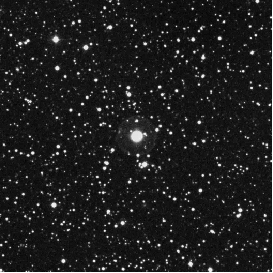
- J2000 RA: 19h44.8m dec: +50 31’
- Planetary nebula, bright, pretty large, round.
- Star in middle of image is 11th magnitude
- Angular diameter 27”X24”
- Visual magnitude, integrated over entire object: 9.8
IC5146, Cocoon Nebula
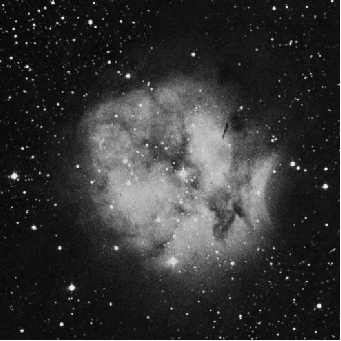
- J2000 RA: 21h53.4m dec: +47 16’
- Maximum diameter: 540 arcseconds
- Distance: 1000 parsecs
- Age 230,000,000 years
- Brightness level: 1 (1=brightest, ..., 6=faintest)
- Emission nebula, pretty bright,
very large, irregular figure.
- A 9.5mag star is located in the middle of the image.
NGC 6910
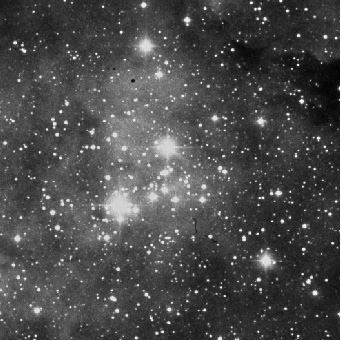
- J2000 RA: 20h23.1m dec: +40 47’
- Angular diameter: 7.0 Arc minutes
- Distance: 1650 parsecs
- Age 10,000,000 years
- Open Cluster, pretty bright,
pretty small in angular size, poor, pretty compressed.
- 20 stars (10-12 mag)
NGC 6913, M29
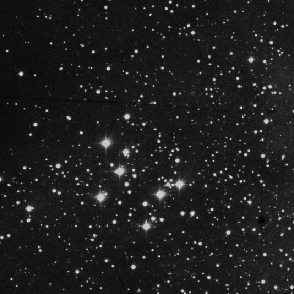
- J2000 RA: 20h23.9m dec: +38 32’
- Distance: 1250 parsecs
- Age 10,000,000 years
- Open Cluster, poor, little
compressed, stars large and small in angular size
- About 20 stars (mags 9-12), brightest star is magnitude 9.0
- Angular diameter 7.0’
NGC 6960, Veil Nebula (western part), Supernova Remnant
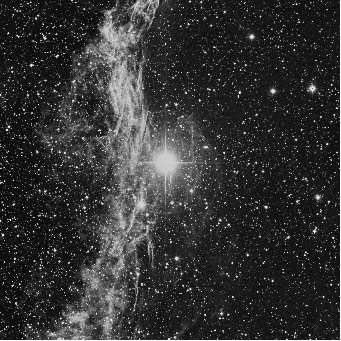
- J2000 RA: 20h45.7m dec: +30 43’
- Angular diameter 70’X6’
- Magnitude: 7.0
- Brightness level: 4 (1=brightest,
..., 6=faintest)
- Reflection nebula, very much remarkable, pretty bright,
considerably large, extremely irregular figure
- 52 Cygni involved
NGC 6992 and NGC 6995, Veil Nebula (eastern part), Supernova Remnant
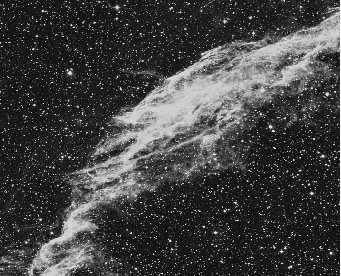
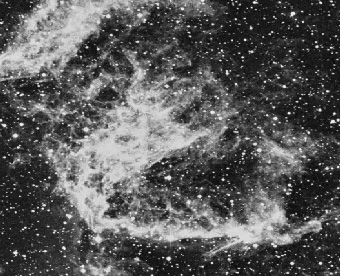
(NGC 6992 left and NGC 6995 right)
- J2000 RA: 20h56.4m dec: +31 43’
- Angular diameter 60’X8’
- Magnitude: 7.0
- Brightness level: 4 (1=brightest, ..., 6=faintest)
- Reflection nebula, very much remarkable,
extremely faint, extremely large, extremely extended, extremely irregular
figure, bifurcated
NGC 7000, North America Nebula
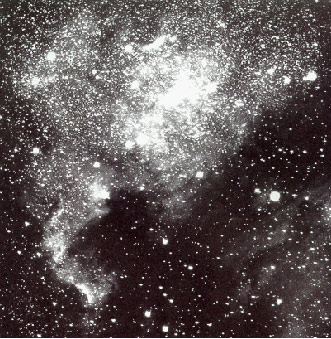
- J2000 RA: 20h58.8m dec: +44 20’
- Angular diameter 120’X10’
- Magnitude: 4.0
- Brightness level: 4 (1=brightest, ..., 6=faintest)
- Reflection
nebula, faint, most extremely large, diffused nebulosity
- Open Cluster NGC 6997 involved
NGC 7092, M39
- J2000 RA: 21h32.2m dec: +48 26’
- Distance: 270 parsecs
- Age 270,000,000 years
- Open Cluster, very large, very poor, very little compressed
- (7-10 mag) Brightest star is 7.0mag
- Angular diameter: 31.0’
Credits
All Images on this page were downloaded from the Sloan
Digital Sky Survey.
Links
Copyright Info
Copyright © 2015, the University Lowbrow Astronomers. (The University Lowbrow Astronomers are an amateur astronomy club based in Ann Arbor, Michigan).
This page originally appeared in Reflections of the University Lowbrow Astronomers (the club newsletter).
This page revised Tuesday, April 10, 2018 7:08 PM.
This web server is provided by the University of Michigan;
the University of Michigan does not permit profit making activity
on this web server.
Do you have comments about this page or want more information about the club? Contact Us.










